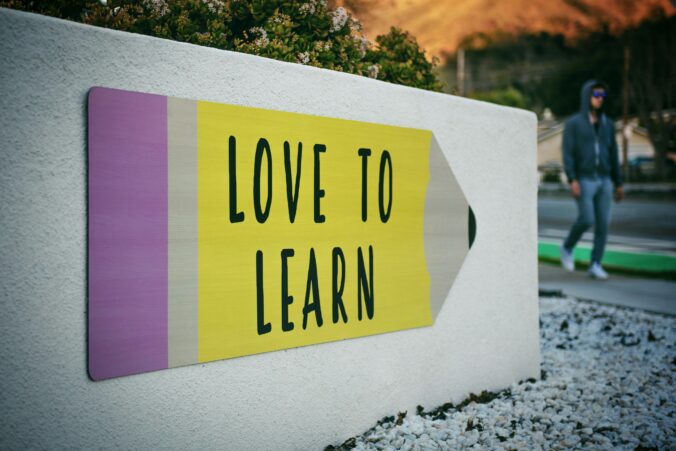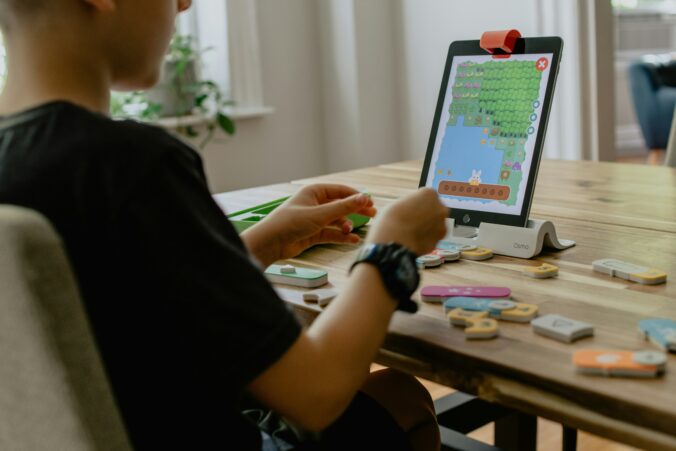Feature Photo by Madiha Jamal on Linked In
AI Tools in Education:
Predictive technologies and AI are becoming increasingly prominent in education, impacting everything from personalized learning to administrative support.
Platforms like DreamBox (for math) and Knewton (acquired by Wiley) use AI to tailor lessons to each student’s strengths, weaknesses, and learning pace. The systems analyze data from students’ interactions, adapting the content and providing real-time feedback. These adaptive learning platforms make it possible for students to learn at their own speed, improving engagement and mastery. These tools can also identify when a student is struggling, providing more support, or suggesting intervention to teachers before issues become more serious.
Another example of AI learning tools is Duolingo for language learning and MATHia by Carnegie Learning. They are AI-driven tutoring systems that provide immediate feedback and explanations. Duolingo uses AI to tailor the difficulty of lessons based on user performance, making it engaging and efficient. These systems offer a supplement to traditional teaching, allowing students to receive additional support outside class hours. They can help reinforce concepts and improve practice frequency, and because of their accessibility, they make learning more flexible.
Tools like Gradescope and Edmentum use AI to help grade assignments, particularly multiple-choice and short-answer questions. Some, like Turnitin, also use AI for plagiarism detection. Automated grading tools can save educators significant time, allowing them to focus on instruction and student support rather than administrative tasks. AI-based grading can also provide faster feedback to students, helping them understand mistakes and learn more effectively.
Systems like Civitas Learning use predictive analytics to identify students at risk of dropping out or struggling academically. By analyzing a range of data points (e.g., attendance, grades, engagement), these tools generate alerts for educators to intervene proactively. This predictive analytics can transform academic advising by making it more data-driven. Educators and counselors can better identify students who need support, potentially improving retention rates and helping students achieve better outcomes.
Voice recognition tools like Google Speech-to-Text and Microsoft’s Immersive Reader assist students who may struggle with reading or writing. These tools transcribe spoken words to text, helping students with disabilities access content more easily. These AI-driven speech recognition enhances inclusivity, ensuring that students with disabilities or language barriers have the resources they need. This can improve confidence and participation in class, helping all students learn on a more level playing field.
Some universities have implemented AI teaching assistants, like Jill Watson at Georgia Tech, a virtual TA developed with IBM’s Watson. Chatbots like Ivy are also used for administrative tasks, such as answering student questions or helping with enrollment. Virtual assistants reduce administrative burdens and ensure students can get quick answers to basic queries, improving communication. This frees educators to focus on more complex student needs and creates a more responsive environment.
Benefits of AI in Education:
AI can create personalized learning paths that adapt to each student’s individual needs, abilities, and progress. By analyzing student data, such as performance on assessments or response times, AI systems can provide content that targets each learner’s strengths and weaknesses. For example, if a student struggles with fractions in math, an AI-powered tool can provide additional exercises, explanations, or hints specifically for that concept.
AI supports self-paced learning, allowing students to advance through material at their own speed, reducing stress and enhancing engagement. Those who grasp concepts quickly can move on to more challenging material, while those needing more time can revisit topics without the pressure to keep up with a set pace.
Many AI tools can provide immediate feedback, which helps students understand mistakes in real-time, reinforcing learning more effectively than delayed feedback. Instant feedback helps students course-correct and retain knowledge more effectively than waiting days or weeks for a teacher’s response.
AI can automate grading for objective assessments like multiple-choice or short-answer questions, freeing up teachers to spend more time on instructional planning, personalized support, and one-on-one interaction with students. This can reduce teacher burnout and improve the overall quality of instruction.
AI-driven systems can automate tasks like attendance tracking, generating progress reports, and managing student data, making administrative processes smoother and less time-consuming. Some schools even use AI chatbots to answer common questions from students, allowing teachers to focus on instruction rather than repetitive tasks.
With AI handling routine tasks, teachers have more time to support students emotionally and academically. They can focus on creative lesson planning, student engagement, and mentoring, all of which add value beyond what AI can offer.
AI enables adaptive learning environments that can adjust the difficulty, type of content, and delivery method based on real-time analysis of student engagement and comprehension. This kind of adaptability can help maintain student interest and keep them challenged at the right level.
By analyzing data trends, AI can help educators identify students at risk of falling behind or struggling with specific concepts. Teachers can then proactively offer additional support or interventions, potentially improving student outcomes and preventing issues before they escalate.
AI can support different learning styles by offering multimodal content—such as video, text, and interactive simulations—that caters to various preferences. Visual learners, for example, might benefit from graphical explanations, while auditory learners might find value in narrated content.
Challenges of AI in Education:
Implementing AI in education requires substantial investment, including software, hardware upgrades, and maintenance. Low-income schools may struggle with costs, but partnerships, subsidies, and open-source tools could increase access. The digital divide may widen if only well-funded schools can afford AI, so investments in digital infrastructure are necessary to ensure all students have internet and devices. Privacy concerns arise as AI requires large data access; strict policies like FERPA help protect student information, and schools should partner with trusted, security-compliant vendors.
Teachers often lack AI training, risking underuse or misuse. Schools should offer professional development to help teachers understand AI’s technical aspects and integration into teaching. Over-reliance on AI could reduce face-to-face interaction, essential for social skills, so AI should complement—not replace—human connections. AI algorithms may carry biases and lack transparency; thus, schools should use tools with explainable insights, regular audits, and ensure human oversight.
AI adoption requires a cultural shift and trust. Open communication about AI’s benefits and limitations, along with involving teachers in decision-making, can ease concerns and show that AI enhances rather than replaces traditional teaching.
Ethical Considerations of AI in Education:
Integrating AI in education offers benefits but also raises ethical concerns, especially around data privacy, transparency, and bias. AI systems require access to sensitive student data, making strict adherence to data protection laws (e.g., FERPA, GDPR) essential. Schools should clearly communicate data usage to students and parents, limit data collection, and vet AI vendors to ensure security.
Ethical Considerations When Using Artificial Intelligence-Based Assistive Technologies in Education
AI often operates as a “black box,” where decisions are hard to interpret, so schools should prioritize tools with explainable algorithms and maintain educator oversight to evaluate AI recommendations critically. Bias is another challenge, as algorithms may perpetuate inequalities; thus, schools should partner with vendors who audit for bias and ensure data diversity. There’s also a risk of over-relying on AI, so educators must balance AI insights with their professional judgment, using it to support—not replace—human decision-making.
For accountability, clear roles must be defined to address AI-related issues, and schools should create an appeals process for students. Establishing AI ethics committees and providing ethical training for educators and students can foster a responsible, inclusive, and fair AI environment in education.
Future Directions in EdTech:
In the next 5-10 years, emerging technologies like AR/VR, blockchain, IoT learning analytics, 5G, and personalized platforms are set to transform education. For example, AR/VR will enable immersive learning experiences, allowing students to explore virtual environments, conduct experiments, and engage in 3D content, deepening understanding and retention.
Virtual Reality and Augmented Reality for Immersive Learning
Blockchain can revolutionize credential storage by giving students secure, lifetime-controlled records, simplifying applications and building trust in digital credentials. IoT devices, such as wearables and sensors, provide data on student interactions, enabling adaptive learning environments and supporting students’ specific needs. 5G and Cloud will make high-quality educational content accessible worldwide, enhancing equity by connecting underserved areas. Lastly, Adaptive Learning Platforms will adjust content in real-time based on students’ needs, creating hyper-personalized learning journeys.
These technologies promise more immersive, accessible, and customized education, shifting teachers toward mentorship roles and preparing students for a digitally literate world that values critical thinking and lifelong learning.






